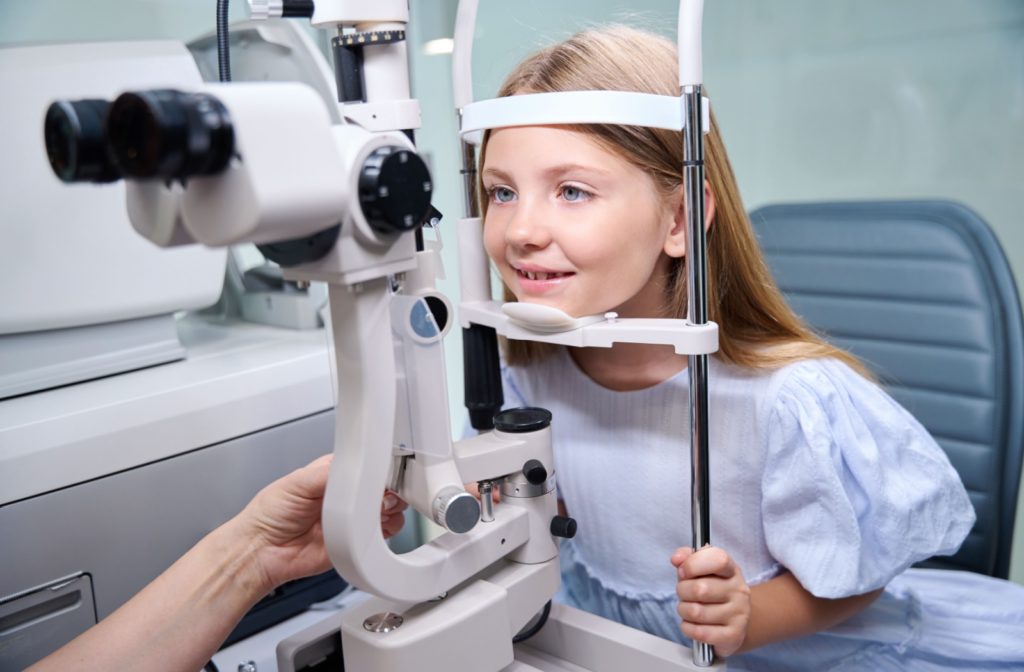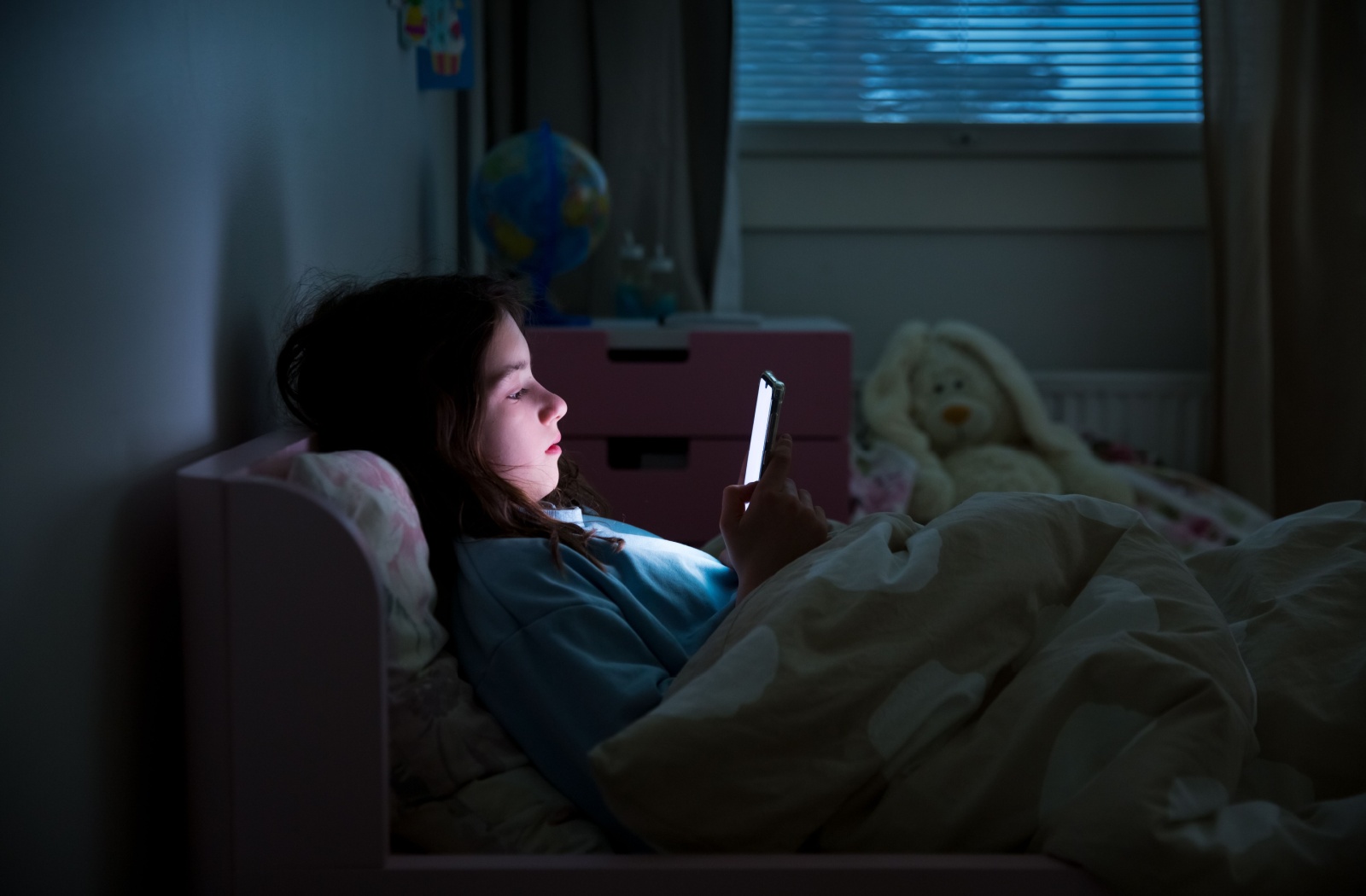We live in a digital world where it’s almost impossible to keep children away from screens. Whether it’s the TV, a smartphone, or the computer, screens have become an integral part of our daily lives. However, screens can often cause digital eye strain—especially for children who don’t know any better. But are screens inherently dangerous to visual development? Can too much screen time affect a child’s vision permanently?
In moderated usage, screens won’t cause any significant problems. However, in excess, they can lead to a significantly higher risk of nearsightedness, sleep disorders, and more. It’s essential to make sure your child uses screens in moderation and follows healthy visual habits to improve their visual development.
The Short-Term Effects of Screen Time
While screens aren’t dangerous on their own, personal habits can make a significant difference in how screen time affects us. When your child uses screens, they’re focusing intently on something a set distance away from their eyes—and it’s not very likely that they’re taking regular breaks to give their eyes a break. This can lead to several problems, like eye strain, dryness, and even disrupted sleep.
Eye Strain
Inside your child’s eye are plenty of tiny muscles and systems designed to both help them focus and navigate their field of view. But when your child stares for too long at a screen, these muscles can tire out, leading to all kinds of discomfort. This condition, called digital eye strain, often causes:
- Headaches
- Blurred vision
- Difficulty focusing
- Sore, tired eyes
- Neck and shoulder pain
This is a common problem for children, as they tend to hold screens closer to their eyes without taking breaks. Fortunately, the condition is also preventable.
Dry Eyes
Blinking naturally spreads a thin film of tears across the surface of your eye. These tears are responsible for keeping your eyes hydrated and protected from the air around you.
Usually, people blink around 1200 times an hour—that’s about 20 times every minute or so. However, when focusing on screens, we tend to blink significantly less. This leaves our eyes vulnerable and can cause:
- Redness
- Itchiness
- Excessive tearing
- Blurry vision
Dry eyes can be extremely uncomfortable, and can feel like your eyes are constantly burning, or like there’s a piece of sand trapped under the eyelid.
Disrupted Sleep Cycle
Screens emit a special wavelength called “blue light.” For most of human history, this light was only emitted by the sun; we’ve evolved to associate blue light exposure with the need to stay awake. To do so, our body suppresses melatonin production when exposed to blue light—this is the hormone responsible for regulating your circadian rhythm.
However, with the prevalence of screens in the modern world, many people use digital devices later into the night. This means that we’re exposed to blue light even when we should be getting ready for sleep. For children, this can create unhealthy sleep habits, which can lead to long-term effects such as:
- Difficulty falling asleep
- Poor sleep quality
- Daytime sleepiness
- Irritability
- Lowered attention span
A healthy sleep schedule is crucial to your child’s development. It’s not just about a good night’s rest; it’s about lifelong habits that can significantly affect your child’s future.
Can Screens Affect Development?
Screens don’t just cause short-term effects. In fact, excessive screen usage may be linked to much higher rates of myopia—more commonly known as nearsightedness.
It’s believed that children who spend most of their time on screens are much more likely to develop myopia. During their developmental years, their eyes begin to adjust to the need to focus on nearby objects rather than distant objects, and this leads to much higher rates of nearsightedness.
Meanwhile, children who spend at least 2 hours a day or more outdoors—or doing any type of distant-viewing activity—were less likely to develop myopia. This means that excessive screen usage isn’t just causing minor discomfort; it could be increasing the risk of long-term problems later in your child’s life.

Tips for Healthy Visual Development
Fortunately, as a parent, you can make some small changes to your child’s routine to promote healthier visual development. It’s not about temporary irritation—it’s about investing in your child’s future vision.
To help, make sure that your child:
- Follows the 20-20-20 rule: Every 20 minutes, have them look at something 20 feet away for at least 20 seconds.
- Spends time outdoors: Encourage at least 2 hours of outdoor activities daily.
- Keeps screens at an appropriate distance: Teach them to hold devices at arm’s length and position computer screens at a distance.
- Takes regular breaks: Ensure they take frequent breaks from screen time to rest their eyes.
- Follows a healthy diet: Foods rich in nutrients like vitamins A, C, and E can help promote eye health.
And don’t forget about regular children’s eye exams! Your child should see an optometrist at least once every year until they turn 19; this lets an experienced eye care professional monitor their vision to make sure their vision is developing in a healthy way.
Book Your Child’s Next Eye Exam
Screen time isn’t inherently harmful—so long as it’s properly moderated. Your child’s eyes will be changing significantly as they grow, and it’s essential to step in to help encourage healthy development.
Here at Old South Optometry, we can answer any questions you have about your child’s vision. We’re here to help you, so book an appointment with our team today.











